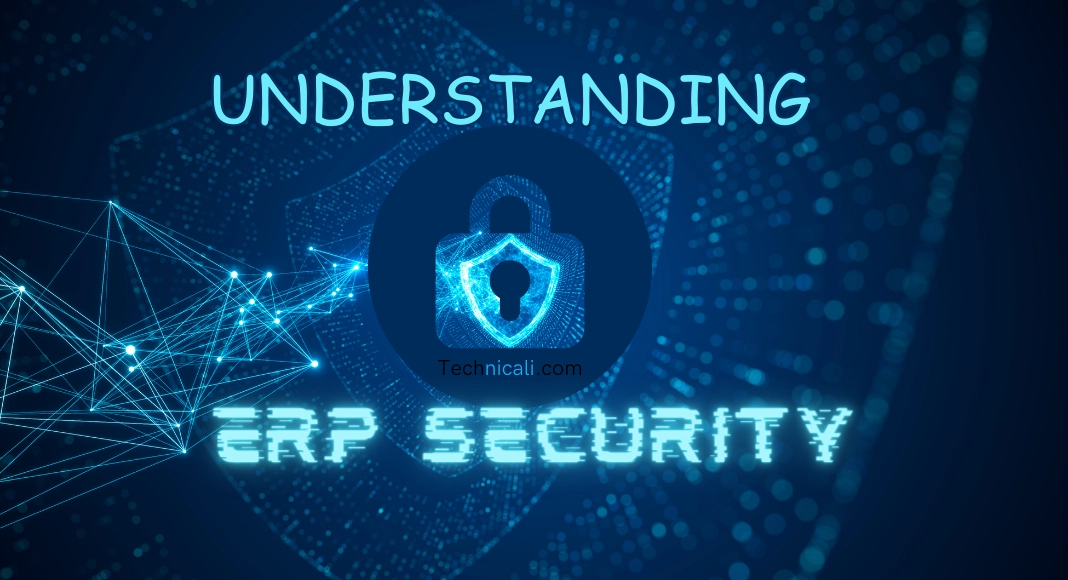Enterprise resource planning (ERP) security isn’t just another fancy feature; it’s the cornerstone of customer trust and business sustainability. As we get into the details of ERP security solutions, it’s crucial for CEOs and managers to not only wrap their heads around the technical side but also understand why securing ERP systems is strategically important. In a world where cyber threats are constantly lurking, understanding ERP security ain’t just about protection; it’s about building an unbreakable digital fortress that guards your precious assets.
Contents
- 1 Understanding ERP Security and Cybersecurity
- 2 Importance of Integrating Cybersecurity with ERP
- 3 ERP Security Audit Guidelines
- 4 Common Cyber Threats Affecting ERP Systems
- 5 Strategies for Assessing ERP Risks
- 6 ERP Data Protection Strategies
- 7 ERP Security Framework Implementation
- 8 ERP Security Solution Types
- 8.1 Intrusion Detection Systems (IDS) and Intrusion Prevention Systems (IPS)
- 8.2 Firewalls and Network Security
- 8.3 Endpoint Protection
- 8.4 Identity and Access Management (IAM)
- 8.5 Data Encryption
- 8.6 Security Information and Event Management (SIEM)
- 8.7 Application Security Solutions
- 8.8 Virtual Private Networks (VPNs)
- 8.9 Security Assessment Tools
- 8.10 Disaster Recovery and Business Continuity
- 8.11 Cloud Security Solutions
- 9 ERP Security Best Practices
- 10 Conclusion
Understanding ERP Security and Cybersecurity
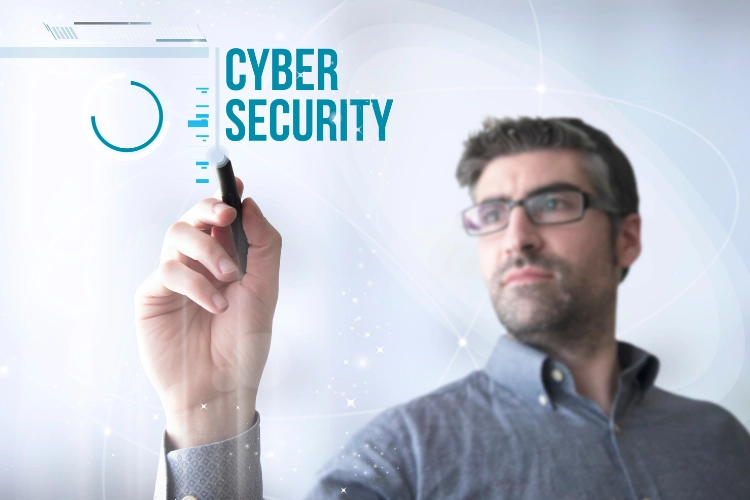
Definition of ERP Security
ERP security is the shield that guards your enterprise’s lifeblood- its data, financial records, processes, and interactions. It’s an intricate mesh of policies, controls, and technologies designed to protect ERP systems from unauthorized access and misuse. The primary objective? Ensure your enterprise’s data’s integrity, confidentiality, and availability.
The Relationship Between ERP and Cybersecurity
While many ERP systems’ security is all about protecting those specific system components, cybersecurity is the one covering all the organization’s precious assets. These two are like best buds, with ERP security playing a crucial role in cybersecurity.
Key Components of ERP Security
Key Components of ERP Security
ERP security is a complex field, with several key components that work together to protect your systems. Here’s a closer look at each one:
- Access Controls: Access controls are the bouncers of your ERP system – they decide who gets in and what they can do! It’s all about managing user permissions, rocking role-based access, and setting up that extra layer of security with multi-factor authentication.
- Data Encryption: Encryption is the ultimate secret agent for your data. It transforms into this crazy complex code that only authorized peeps can crack. So even if some person tries to snoop around while it’s being sent, they won’t be able to make heads or tails of it! It’s like having a decoder ring for your information, keeping it safe from prying eyes. No decryption key, no access! Your data stays protected and totally under wraps.
- Audit Trails: An audit trail is a detailed record of everything in your ERP system. It’s like a detective’s log, keeping tabs on what happened, when, and even who did it. This treasure trove of information is gold when it comes to handling incidents and digging deep into investigations. You can follow in the user’s footsteps and unlock all the secrets, keeping your organization safe and accountable.
- Security Policies: Security policies are the ultimate guardians of your organization’s data. They lay down the law, from password requirements to disaster recovery plans. And that’s not all – they cover everything from access controls to encryption protocols and incident response. By embracing these bad boys, you can keep your sensitive information safe and sound, giving those sneaky risks a run for their money.
- Compliance Management: Different industries have these rules about handling data. And you know what? Compliance management is there to make sure your ERP system follows those rules. Why? It helps you dodge those fines and keeps your customers trusting you.
Importance of Integrating Cybersecurity with ERP

Integrating cybersecurity with your ERP system security is like an extra layer of armor to keep those sneaky cybercriminals. Those ERP systems are shining treasures for them! You’ll have an unstoppable defense strategy by merging cybersecurity measures into your ERP system. There are no weak spots here! This means consistent security protocols across all your business processes, reducing the chance of any breaches.
ERP Security Audit Guidelines

ERP Security Audit Guidelines
An ERP security audit comprehensively reviews your ERP software and system’s security measures. Here are some key guidelines:
- Assessing Current Security Measures: Before diving into an audit, you must start with an assessment of your security measures. We’re talking about going through firewalls, intrusion detection systems, encryption protocols, and all those fancy security controls you’ve got. Give them a proper review to understand where you stand and find any weak spots that need fixing. Trust me, taking the time for this thorough examination will keep your systems and data safe from those sneaky digital threats. Stay one step ahead in this crazy digital world.
- Identifying System Vulnerabilities: The goal of an audit is to identify potential vulnerabilities in your ERP system. These could range from outdated software to weak passwords or insecure network configurations.
- Evaluating Access Control Protocols: When you’re auditing, you’ve got to give those access control protocols a thorough check! Take a real close look at who’s got their paws on that precious data. Let’s not forget about how they’re granting those access rights. Are they doing it right? Are they keeping it tight? We must make sure those rights are managed and maintained well! So, analyze these key aspects because we’re all about keeping our data and systems secure.
- Reviewing Compliance with Relevant Regulations: In some industries, you have to play by the data protection and privacy rules. An audit will ensure your ERP system is all good and compliant with those regulations.
Common Cyber Threats Affecting ERP Systems

ERP systems face a variety of cyber threats. Here are some key ones to be aware of:
- Phishing Attacks: Phishing attacks are sneaky cyber attacks that use deceptive tricks to fool employees into spilling the beans on sensitive info. These attempts often come disguised as harmless emails, trying to trick and mislead users into unknowingly giving away their login creds and other secret stuff. Folks and organizations must stay alert and have tough security measures to protect themselves from these fraudulent attacks.
- Malware: Have you ever heard of malware? This trouble-making software is all about wreaking havoc on your computer systems. It can slither through email attachments, infected USB drives, or even when you accidentally stumble upon sketchy websites that exploit your system’s security holes. Just stay sharp, take precautions, and Protect your systems!
- Insider Threats: Sometimes, the biggest threat to an organization’s security comes from within. This could be a disgruntled employee seeking revenge or a well-meaning staff member who accidentally exposes sensitive data.
- Ransomware: Ransomware is malware that encrypts your data and demands a ransom for its release. These attacks can be devastating, leading to significant data loss and financial costs.
- SQL Injection: SQL injection is a move cybercriminals pull to exploit weaknesses in your database system. They insert malicious SQL code to get their hands on your precious data, mess with it, or even wipe it out completely. Not cool, right? This can spell big trouble, like exposing sensitive information, messing up your business, and tarnishing your reputation. So, ensure you’ve got the best security measures in place and keep your database system updated to protect from SQL injection attacks.
Strategies for Assessing ERP Risks
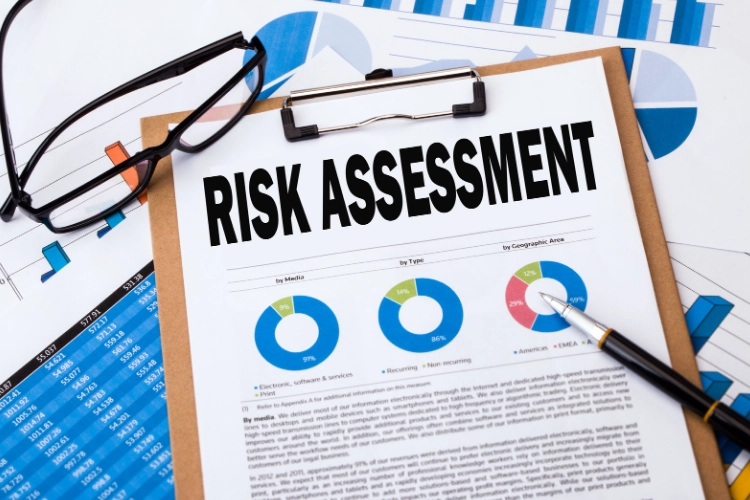
Strategies for Assessing ERP Risks
Risk assessment is an essential part of managing a comprehensive ERP security strategy. Here are some key strategies:
- Regular System Audits: System audits find the weak spots in your ERP system. These audits check data integrity, user access controls, and network security. It’s like hacking your system but for a good cause!
- User Access Reviews: Keeping tabs on who’s got the keys to your ERP system is crucial to keep suspicious eyes away from your sensitive information. Don’t let those intruders in! Make sure every user’s access rights match their job role and responsibilities.
- Network Analysis: By digging deep into your network infrastructure, you can spot those weak points that cybercriminals would kill to exploit. This network analysis lets you unleash advanced tools and techniques to monitor network traffic, catch any weird stuff, and expose those hidden threats that want to mess with your organization’s security. Taking these proactive measures will shield your network, keeping your precious data and resources safe from the dark side!
- Threat Intelligence Monitoring: Staying informed about the latest cyber threats can help you proactively defend against them. Threat intelligence platforms provide real-time insights into emerging threats, helping you adjust your security strategy as needed.
ERP Data Protection Strategies
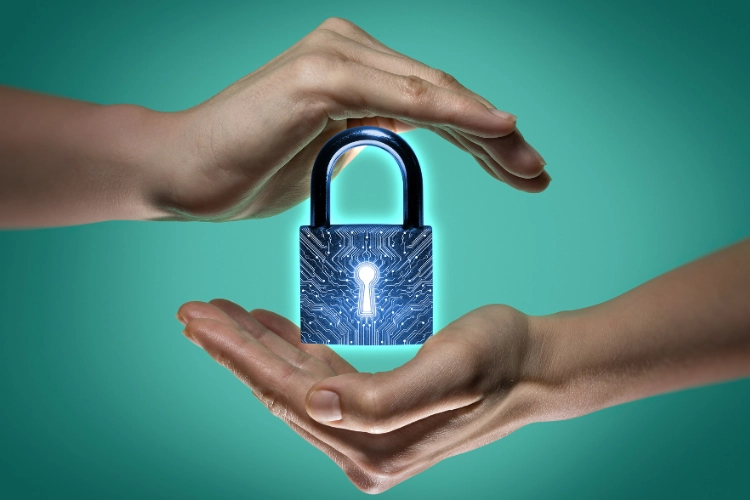
Data is the heart of your business data ERP system, making its protection critical. Here are some strategies to consider:
- Regular Backups: Regular backups ensure you can quickly and effectively restore your system after a data disaster strikes. By regularly backing up your precious files, documents, and info, you’re building a safety net ready to catch you in any unexpected chaos. It’s highly recommended to make backups frequently, keeping them securely stored, preferably in a secret hideout or in the cloud, for extra protection against evil hardware failures, natural disasters, or cyber villains. These proactive measures will give you peace of mind, knowing your valuable data is safeguarded and ready to rise like a phoenix when needed.
- Robust Encryption: Encryption is a cryptographic armor protecting your data from unauthorized peeps. It transforms your precious info into an unreadable, mind-boggling mess. So even if someone tries to snoop around, they’ll be left scratching their heads.
- Data Masking: This technique disguises sensitive data, rendering it useless and completely baffling to potential intruders. Swapping out real data with cunningly crafted fake yet realistic information lets developers and testers work with data sets fearlessly, all while keeping sensitive information locked up tight. This approach not only adds an extra layer of protection but also amps up overall data privacy during data migration on the cloud.
- Implementing Redundancy involves storing multiple copies of your data in different locations. This ensures that even if one copy is compromised, others remain intact. It’s a vital strategy for protecting against data loss and ensuring business continuity.
ERP Security Framework Implementation

Overview of ERP Security Frameworks
ERP security frameworks are like the superhero blueprints for your organization’s cybersecurity defense. They lay the law on best practices, processes, and cool technologies that can lock down your ERP systems like a fortress. These frameworks cover risk assessment, spotting intruders, encrypting data, controlling user access, and keeping an eye on things 24/7. Organizations can shield their precious data and critical business data and processes from those cyber attackers by following an ERP security framework.
Steps for Implementing an ERP Security Framework
- Evaluate Current Security Posture: Before you dive into setting up that ERP security framework, you must know where you stand. Look at your current security setup – what’s working, what isn’t, and where you’re vulnerable. Don’t forget to bring in those cool tools like vulnerability scanners and penetration testing to give it a little extra oomph! It’s time to rock that security game!
- Define Security Objectives: First things first, figure out where you stand in terms of security. Got it? Good. Now, let’s talk about your security goals. What do you want to achieve with your ERP security setup? We’re talking about ramping up your data protection, staying on the right side of those regulations, or protecting when it comes to incident response times.
- Select a Framework: With your objectives in mind, select a security framework that aligns with your needs. Various frameworks are available, such as ISO 27001, NIST, and COBIT. Each has its strengths and is suited to different organizations and goals.
- Implement Security Controls: After choosing a framework, it’s time to implement the plan. This involves implementing the recommended security controls, including encryption, firewalls, and multi-factor authentication.
- Continuous Monitoring: Lastly, keeping a watchful eye on your defenses is crucial! Look for any fishy business, sneaky access attempts, or sketchy behavior. Waste no time and unleash your security ninja skills by ramping up protection, investigating, and smacking those patches and updates in the face of potential threats. Stay one step ahead of those cyber attackers and keep your systems safe and sound in this wild world of cybersecurity!
Challenges and Solutions in Framework Implementation
Implementing an ERP security framework can be a real pain! Dealing with resource constraints, resistance to change, managing business processes, and technical complexities is similar to navigating a minefield. With some clever planning and strategy, we can conquer these obstacles! Get those stakeholders involved from the get-go, make changes in bite-sized stages to keep the chaos, and if all else fails, don’t hesitate to call in the experts to tackle the technical issues.
Monitoring and Continuous Improvement of the Security Framework
In cybersecurity, relying on a static defense strategy is not enough. Threats are constantly evolving, and new technologies pop up like mushrooms after rain. So, buckle up and adapt your security framework accordingly. Regular monitoring and software updates really are the secret sauce to keep those attackers at bay. Throw some risk assessments, security control updates, and employee training sessions.
ERP Security Solution Types
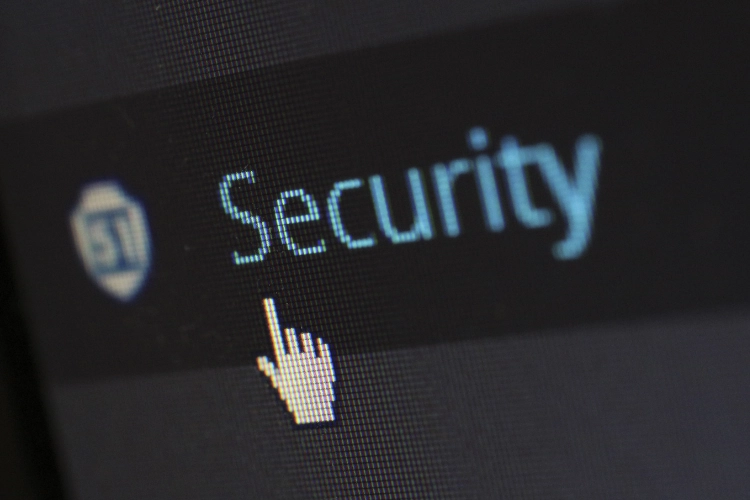
Enterprise Resource Planning (ERP) systems, those fancy things that manage and integrate key business processes, are prime targets for those pesky cyber criminals. But on-premises ERP systems, security isn’t a luxury; it’s a must-have! We’re discussing intrusion detection, data encryption, cloud ERP security, and more. These security solutions are like the superheroes guarding your ERP system, creating layers of defense against all those potential threats. So, understand these solutions because it’s time to implement an epic security strategy for your organization!
Intrusion Detection Systems (IDS) and Intrusion Prevention Systems (IPS)
These are the watchtowers of your digital fortress. IDS and IPS are on a constant lookout for any sketchy activity or breaches of your security policies. If they spot anything fishy, IDS will give you a heads-up, while IPS will kick out some serious hackers and block the threat.
Firewalls and Network Security
Imagine firewalls as the badass walls of your digital fortress, kicking unauthorized access and malicious attacks to the curb. These powerful protectors carefully scrutinize the traffic in and out of your network, ensuring only trusted connections get through while giving potential threats a big “NOPE!” By keeping your secure internal network separate from the sketchy outside world, firewalls become the ultimate defense squad, keeping your precious data safe and your digital kingdom untouchable.
Endpoint Protection
This security measure puts all the attention on the devices that access your ERP system, like computers, laptops, and mobile devices. It’s all about ensuring these endpoints are locked tight so no threats can mess with your precious system. We’re talking serious protection here, people!
Identity and Access Management (IAM)
IAM systems ensure only the cool kids with the right credentials can access sensitive information, keeping the troublemakers and data breaches away. So, no unauthorized access to user accounts is allowed.
Data Encryption
Encryption is turning your data into an indecipherable language, keeping it safe from intruders. So, even if someone manages to snatch your data, it’s like a puzzle without the right pieces to solve it. Take that, data thieves!
Security Information and Event Management (SIEM)
SIEM, the cybersecurity superhero, is a hub that collects, stores, and analyzes security alerts from all over in real time! It’s on a mission to spot patterns, outsmart sophisticated threats, and unleash prompt incident response. With SIEM by your side, organizations can level up their security game and give potential risks a big “nope, not today!”
Application Security Solutions
These solutions secure the software running your ERP system, protecting it from malware and hacker attacks. We’re talking antivirus programs, application firewalls, and patch management tools. So you can sit back, relax, and let them handle the security business.
Virtual Private Networks (VPNs)
Virtual Private Networks (VPNs) are the ultimate agent for your Enterprise Resource Planning (ERP) system. VPNs create this super secure and private communication channel between you and your data. It’s all about keeping your sensitive info out of the wrong hands. So, no more worries about unauthorized access or interception. Your data transmission is locked down tight!
Security Assessment Tools
These tools go on the offensive, pretending to be attackers to find weak spots and see if your security measures can handle the heat. They give you some serious intel to level up your security.
Disaster Recovery and Business Continuity
We should have a plan for the worst-case scenarios so our business can keep running even in the face of a major disaster. We’re discussing data backup strategies, recovery plans, and business continuity plans. No disaster is going to bring us down!
Cloud Security Solutions
Securing these virtual realms has become very important as businesses hop on the cloud bandwagon and migrate their ERP systems. Cloud security solutions bring out the big guns with fancy encryption, boss-level access control, and state-of-the-art secure cloud storage. These are built to protect your precious data and critical apps from any shady characters trying to get in. With these top-notch data security solutions, hybrid enterprise businesses can rock the benefits of cloud computing while keeping their data integrity and confidentiality on lockdown.
ERP Security Best Practices
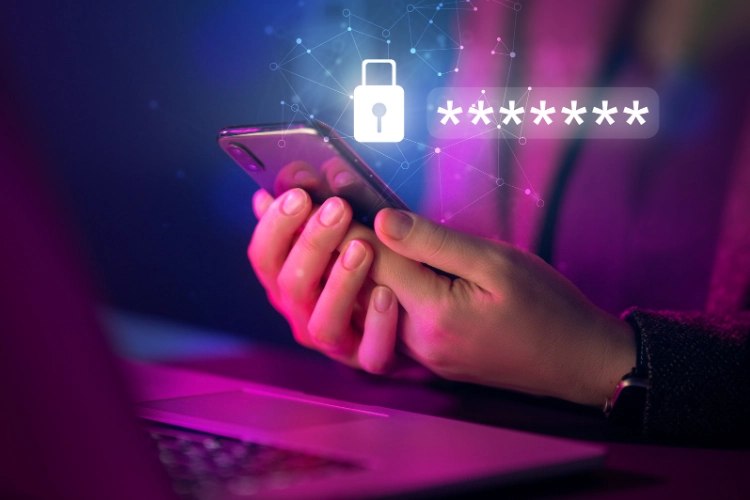
Establishing a Culture of Security Awareness
Building a security-centric culture is about getting your team in on the secret. Teach them the tricks, run wild with awareness campaigns, and fuel that rebellious spirit of proactive security.
Regular Updates and Patch Management
Keeping your systems updated is an extra armor. It’s all about staying one step ahead of those pesky security vulnerabilities and threats. So, don’t leave your defenses hanging! Update and upgrade!
Incident Response Planning and Execution
Having the best incident response plan is the army ready to face cyber attacks! It guarantees you can swiftly and effectively tackle any security breach.
Best Practices for User Training and Support
Teaching users about secure password policies and spotting those phishing attempts is giving your security upgrade. It’s all about fortifying that human element. Stay sharp and stay safe!
Conclusion
Securing ERP systems is no joke for organizations. You should be on top of your game! Regular audits, tight access controls, data encryption, and compliance. It’s a whole package deal, you know? The cyber attackers out there keep changing tactics, so stay awake and protect your ERP system. Integrate cybersecurity measures into it to build a solid defense and protect your sensitive customer data. Remember, in this digital world, being vigilant is the weapon against those cyber threats.
